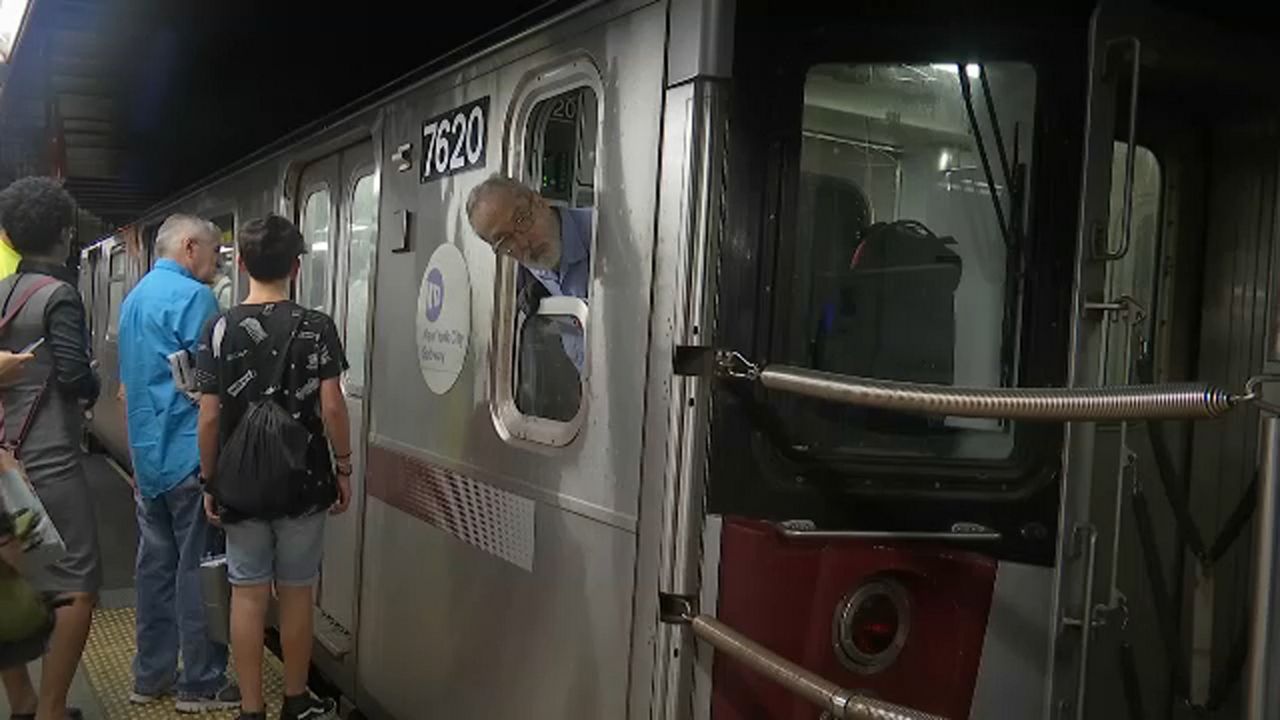Subway conductors will soon have the option to don body cameras while on the job, officials said Tuesday, in the hopes the devices will deter commuters from attacking the transit workers.
A two-on-one attack on a subway conductor at a Brooklyn station Saturday was caught on a straphanger's camera — the result, officials say, of rider rage over a service change:
"It was shocking to me," New York City Transit President Andy Byford said at a press conference announcing the body camera pilot. "In fact, I would go further to say it was disgusting, it was appalling, when I saw that footage just the other day."
But some subway workers will soon be equipped with body cameras in a bid to slow attacks on them, as part of a pilot program between New York City Transit and the Transport Workers Union, the local transit union.
They'll be tested first on subway conductors, who are exposed — sometimes to riders fuming over delays or slow service — when they pop their heads out at each station.
The NYPD last year began equipping police officers with body cameras.
"I think it's a sad state of affairs that we have to provide transit workers — people who are just doing their job, trying to get New Yorkers from A to B — that we have to even consider such an option," Byford said.
Officials concede some of the assaults, including Saturday's 4:40 a.m. attack at the Grant Avenue stop, stem from rider unhappiness over unreliable subway service.
"We know that the train was subject to a delay," Byford said. "But that in no way excuses the behavior that went on that day."
In addition, the Transport Workers Union's "Most Wanted" poster will be displayed in stations and on token booths.
The union debuted the poster earlier this month to highlight attacks on workers in the transit system including on buses, many of which are already equipped with cameras.
"So these people can get caught," said Tony Utano, the president of TWU Local 100. "When they get caught, they're going to be prosecuted to the full extent of the law, because we're going to be in the courthouse to make sure they get prosecuted to the full extent of the law."
Update, 7:25 p.m.: The MTA has provided data on physical assaults and harassment — such as spitting, pushing, and abusive language — of transit workers that show both have increased since 2014.
Breakdown from the MTA
- The number of all incidents in the agency rose in 2014, 2015 and 2016, dropped in 2017, and has risen in 2018 year-to-date compared to 2017 year-to-date.
- The total number of assaults dropped in 2014 and 2015, rose in 2016 and 2017, and has dropped in 2018 year-to-date.
- Harassments increased in 2014, 2015 and 2016, dropped in 2017, and have risen in 2018 year-to-date.
- All incidents in subways dropped in 2014, rose in 2015, dropped in 2016, and have risen in 2017 and 2018 year-to-date.
- The number of assaults in subways did not change in 2014, then rose in 2015, 2016, 2017, and 2018 year-do-date.
- The number of harassments in subways decreased in 2014, rose in 2015, dropped in 2016, and has risen in 2017 and 2018 year-to-date.
- All incidents in buses rose in 2014, 2015, and 2016, decreased in 2017, and increased in 2018 year-to-date.
- Assaults in buses dropped in 2014, 2015, and 2016, rose in 2017, and have dropped in 2018 year-to-date.
- The number of harassments in buses rose in 2014, 2015, and 2016, decreased in 2017, and has risen in 2018 year-to-date.
MORE NEW YORK TRANSIT COVERAGE



